Table of contents
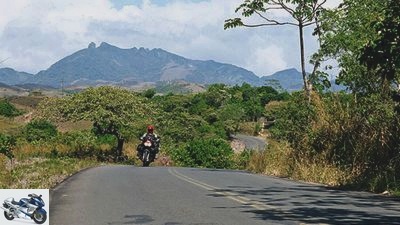
Hess
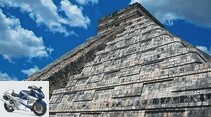
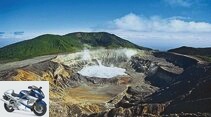

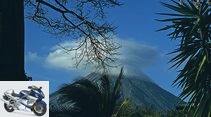
14th pictures
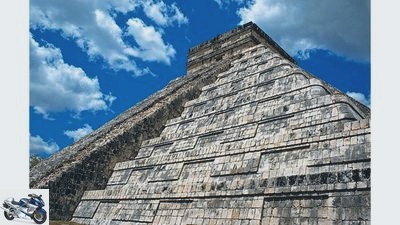
Hess
1/14
The Mayan pyramid Chichen Itzá in Mexico is one of the highlights of the sights.
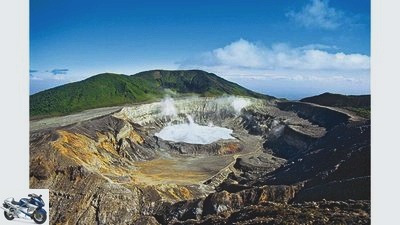
Hess
2/14
The Poás Crater in the heart of Costa Rica. In the middle of the crater there is an acid lake, which is one of the most acidic in the world.
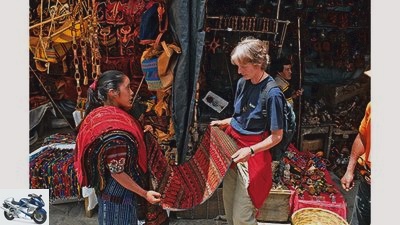
Hess
3/14
Handicrafts in abundance can be found in the Chichicastenango market.
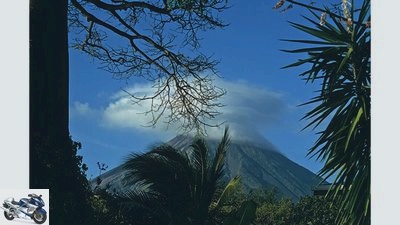
Hess
4/14
Volcanoes that are not yet completely extinct are not uncommon on the trip.
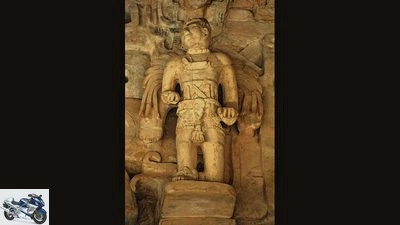
Hess
5/14
A figure from Mayan mythology suggests the historical roots of the region.
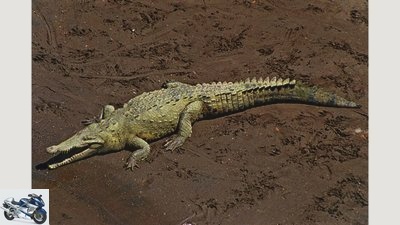
Hess
6/14
Relaxed alligator in Costa Rica.
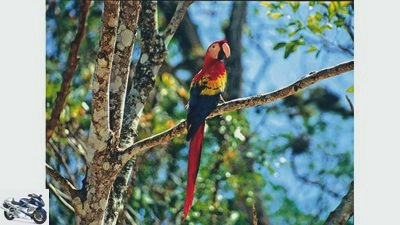
Hess
7/14
In the subtropical regions, you can often see macaws or other parrots.
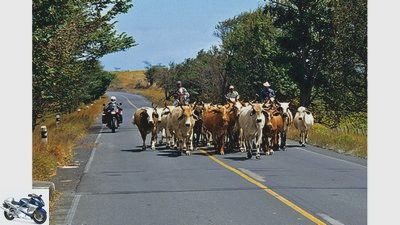
Hess
8/14
Sabaneros are the names of the cattle drovers who populate country roads in Nicaragua.
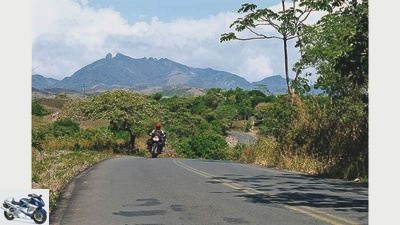
Hess
9/14
Angela Schmitz and Axel Hess traveled on the Maya Trail from Panama to Mexico and gathered overwhelming impressions.
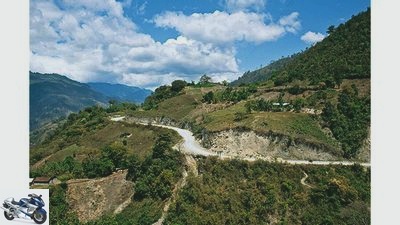
Hess
10/14
On a dirt road through the highlands of Guatemala. You won’t find any paved roads here.
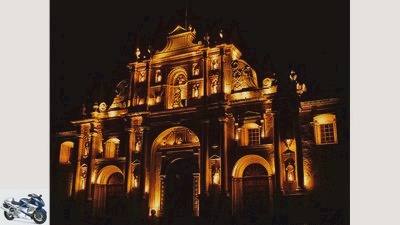
Hess
11/14
The colonial churches in Antigua, the old capital of Guatemala, are a magical attraction.
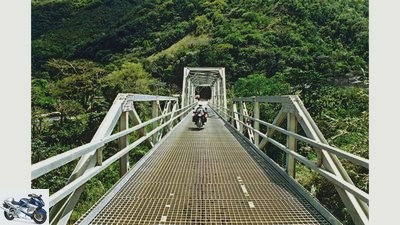
Hess
12/14
Near the village of San Cristobal Verapaz: Where bridges aren’t as great as here, you have to drive through the river.
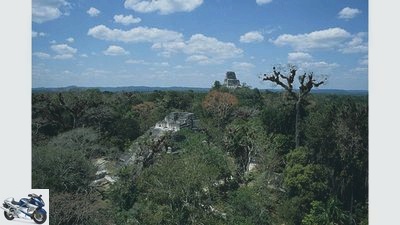
Hess
13/14
Many of the old Mayan pyramids have already been incorporated into the jungle.
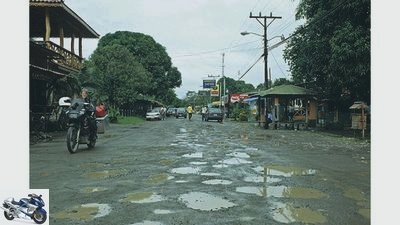
Hess
14/14
Not uncommon: dusty slopes that turn into muddy pothole slopes when it rains.
to travel
On the way: From Panama to Mexico
On the go: Central America
From Panama to Mexico
Central America beckons with superlatives: Panama Canal, volcanoes, Mayan sites, coffee and bananas wherever you look. Anyone who, like our author, knows how to combine all of this with a motorcycle on adventurous roads has a lot to tell.
Markus Biebricher
03/18/2010
Only perishable goods are handled at the weekend”, growls the customs officer in the port of Panama City. Our motorcycles clearly do not belong in this category. I put the deepest possible melancholy in my eyes and the guy actually thaws. After a little eternity he digs out matted forms. Suddenly mutating into a Latino gentleman, he even helps us fill out the form. In no time at all, as long as the enduro boots and the heat of the sun allow, we whiz with the documents into the warehouse, screw our two-cylinders together and roll the machines up to our customs officer five minutes before the gate closes. He puts the last stamp on the papers and lets the extra salary for his deed disappear into his pocket. Central America can come!
Buy complete article
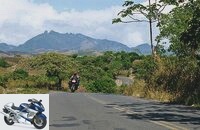
On the go: Central America
From Panama to Mexico
6 pages) as PDF
€ 2.00
Buy now
The very first way leads to the Panama Canal, the greatest technical marvel that Central America has to offer. Investors have speculated here since 1880, and tens of thousands of people lost their lives fighting the jungle until 1914 when the first American freighter crossed the 82-kilometer canal. We watch today’s hustle and bustle from the Miraflores docks. A cargo ship maneuvers through the three step systems for around ten hours, where it is pulled through the locks by large locomotives. For the sewer workers, this is centimeter work. 13,000 ships from 70 countries pass through the canal annually, a passage costs an average of 50,000 US dollars, and nowhere does the state take in more. A crazy spectacle, but at some point it is enough and we crumble into the quieter interior of Panama.
Coffee plants and banana trees stimulate the senses along the route. Extensive plantations also stretch along Costa Rica’s Caribbean coast. Doles, Chiquitas and Del Montes grow there. Pesticides prevent insect infestation, but the residents have to deal with polluted groundwater. Since the beginning of the last century, the big corporations have been determining where to go. The economy has to boom, few win, most get poorer.
We follow a newly paved coastal road on the Pacific until a broken bridge abruptly slows us down. The water is not deep, but it is full of slippery stones. With a lot of luck and gas, we will lurch through the river. Then a gravel road. The shock absorbers are overwhelmed, the shaking goes into arms and legs. Wet with sweat we reach the Manuel Antonio National Park, a natural paradise. Here we have an assignment to fulfill: we have to find Marcelo’s family. Marcelo is a painter who a few months ago in Brazil gave us drawings for his children who are supposed to live here somewhere with their mother. We have guarded the drawings for thousands of kilometers. The woman is said to have a small stall on the beach. In fact, after a short search, we find them. “What a story, you are crazy”, she exclaims enthusiastically. She invites us to her house, and the children are thrilled when we give them the drawings.
Driving becomes an adventure in Nicaragua. In some asphalt craters, an entire 21-inch front wheel will fit. We bump over corrugated iron tracks, escape flames that hit the road from burning fields, and cross trenches that alternate with asphalt remains. The fork of my motorcycle breaks through more than once and the fender breaks. Shattered earth in the land of a thousand volcanoes. Not only geologically, but also politically. After decades of tyranny by the Somoza regime, civil war and economic boycott by the USA, the Nicas only slowly got used to democratic and social reforms. Literacy and broad health care improved living conditions, but corruption and nepotism still set the tone in many places. None of this changes the warmth and courage of the people we meet.
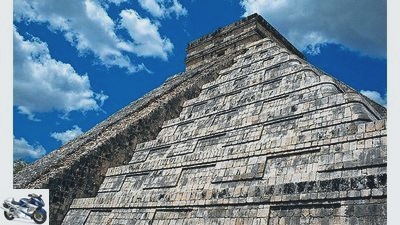
Hess
The Mayan pyramid Chichen Itzá in Mexico is one of the highlights of the sights.
Via Copán in Honduras we follow the Mayan route to Guatemala. Motorcyclists count little in this country. Smelly trucks make it difficult to drive on the highways. The drivers ruthlessly push us off the piste. It runs past Lake Amatitlán to the Panchoy Valley to Antigua, which is idyllically surrounded by three high volcanoes. We meet Darryl in the old capital. The North American happened to open a hotel today with his Guatemalan wife Carmen. Check in and get out of your sweaty clothes, that has to be now. Darryl’s colonial villa turns out to be an oasis with a roof terrace, in Antigua itself everything revolves around tourism. Everyday Guatemalan life is hidden between an Irish pub, a Viennese cafe and a good Italian. Preparations for semana santa, Holy Week, are in full swing. Pilgrims move through the narrow streets in full-day processions, it is the highest festival for the faithful.
The sleepy nest Chichicastenango is at the end of a winding country road. Twice a week the place turns into a big market place. Early in the morning, when the fog slowly clears, the Maya descendants come down in small buses from the surrounding mountain villages. Their brightly colored towels are filled to the brim with handcrafts and food they have made themselves. They offer both for sale at simple wooden stands. Guatemala is the largest dyeing and weaving center in the western hemisphere. A spectacle that attracts crowds of tourists. I can’t help but find a hammock in my aluminum box, which is about to burst from all the welds.
We bump up on dirt tracks up into the densely wooded mountains. Passing Lake Peten Itzá, we reach the legendary Tikal National Park in the afternoon. With a lot of luck we will find a place to camp not far from the Mayan ruins, snakes and tarantulas are part of the neighborhood.
The roar of the monkeys wakes us up early in the morning. After a cup of tea and a handful of biscuits, we are on our way before the big buses with the day tourists arrive. Many temples, palaces and residential complexes have been uncovered in the huge complex, but countless buildings are still undiscovered beneath the surface of the earth. At some point the Maya relocated their economic and political center to the adjacent lowland area of what is now Mexico. We follow in the footsteps of the Maya through the former British crown colony of Belize to the Yucatán. In the heat of the Caribbean, our daily stages are getting shorter and shorter, we are drenched in sweat when packing up in the morning. One Maya site chases the next, it is as if the old gods were calling: Uxmal, Chichen Itzá, Ek Balam, Tulúm – legendary names, systems of signs and numbers, a mythological calendar system in which the gods determined the fate of people. The Maya left treasures full of puzzles for posterity. Even we feel a gift from them, we have to go back here. The gods want it that way.
Info
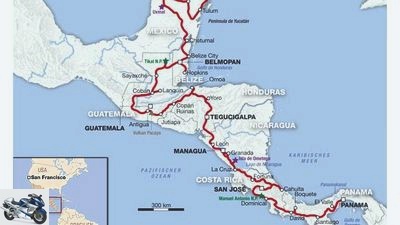
Drawing: archive
Central America itinerary: Duration: 90 days; Distance driven: 11,000 kilometers.
A trip through the countries of Central America is no picnic. The traveler is rewarded by tropical nature, warm-hearted people and mysterious Mayan gods.
Getting there:
Various airlines fly to Panama City several times a week. Our author and the photographer shipped their motorbikes from Ecuador by air from South America. At the end of the trip, the planes were flown from Cancun to Dusseldorf. Air freight companies such as LTU in Dusseldorf or transport companies such as Eculine in Hamburg recalculate the transport costs again and again depending on the destination and the current economic situation. You have to calculate between 500 and 1000 euros per motorcycle and trip.
Travel time:
The states of Central America offer themselves as a travel destination all year round. Each region has different climatic conditions due to the rainy season (November to April) and dry season (May to October). It is very warm in the Pacific lowlands and on the Caribbean coast with average temperatures of 25 to 40 degrees Celsius.
Papers:
With a passport that is valid for at least six months, tourists in the countries of Central America receive a residence permit for 90 days. For the temporary import of a motorcycle (usually for a small fee) an international driver’s license and an international vehicle registration document are required. A Carnet de Passage is not required. The period of the temporary import permit for the vehicle (usually also 90 days) is stamped on the passport in addition to the document issued. Liability insurance for the motorcycles can already be taken out in Germany (except for Mexico and Costa Rica). At the Costa Rican border you have to take out mandatory state insurance.
Health:
In addition to the mandatory vaccinations such as tetanus, polio and diphtheria, vaccinations against hepatitis and rabies are advisable. A small emergency pharmacy with remedies for pain, fever, diarrhea and bites should not be missing in the luggage as well as an effective mosquito repellent. Medical care is inadequate, especially in rural areas.
Motorcycling:
The filling station network in the individual countries of Central America is usually sufficient for motorcycles with small tanks, the fuel usually has more than 90 octane. Due to the sometimes poor road conditions, an enduro is recommended for traveling.
Literature / Maps:
The following travel picture book on the subject is available from the author in bookshops: Latin America in sight. Part 2 – Central America, Angela Schmitz, NZVP-Verlag, 25.80 euros. Central America on a Shoestring, Lonely Planet, 21.50 euros. Map: Central America, 1: 1100000, ITMB Publishing, 8.95 euros.
Related articles
-
to travel Mexico Mexico Change of course What to do when a hard winter suddenly arrives in the land of deserts, beaches and volcanoes? Michael Schroder…
-
Motorcycle trip through Mexico
Jo Deleker 34 pictures Jo Deleker 1/34 Out and about in Mexico. Jo Deleker 2/34 There aren’t that many in Mexico anymore, so everyone has to be in the…
-
Brandl to travel By land to China By land to China The trail of the caravans You need courage, trust and zest for action if you travel alone on a…
-
Streblow to travel Out and about in Romania Out and about in Romania New truths Forty years after the author and his parents were on the road in Romania…
-
On the way in the north of Vietnam
Breakable 27 pictures Breakable 1/27 A lot of interest for the travelers, not only in the rural gas station at Moc Ha. Breakable 2/27 The warmth of the…
-
Motorcycle tour Baja California and California
Jo Deleker 35 pictures Jo Deleker 1/35 Jo Deleker 2/35 The man and the sea: the sun rises at seven in the morning from the Gulf of California near Bahia…
-
Jorg Lohse 43 pictures Jorg Lohse 1/43 … and into the kilometer-wide river bed of the Kali Gandaki. Jorg Lohse 2/43 One-a-pit stop at Ramesh (left) and…
-
to travel Bulgaria Bulgaria Southeast course Bulgaria – cheap travel destination? A transit country in south-east Europe on the way to Turkey? True, but…
-
Daams to travel Montenegro Montenegro Phoenix from the ashes The southernmost fjord, the deepest canyon and one of the last primeval forests in Europe ??…
-
Deleker 29 pictures Deleker 1/29 Black sand, lakes and glaciers. Iceland has an incredible landscape to offer. Deleker 2/29 With this rich green ……